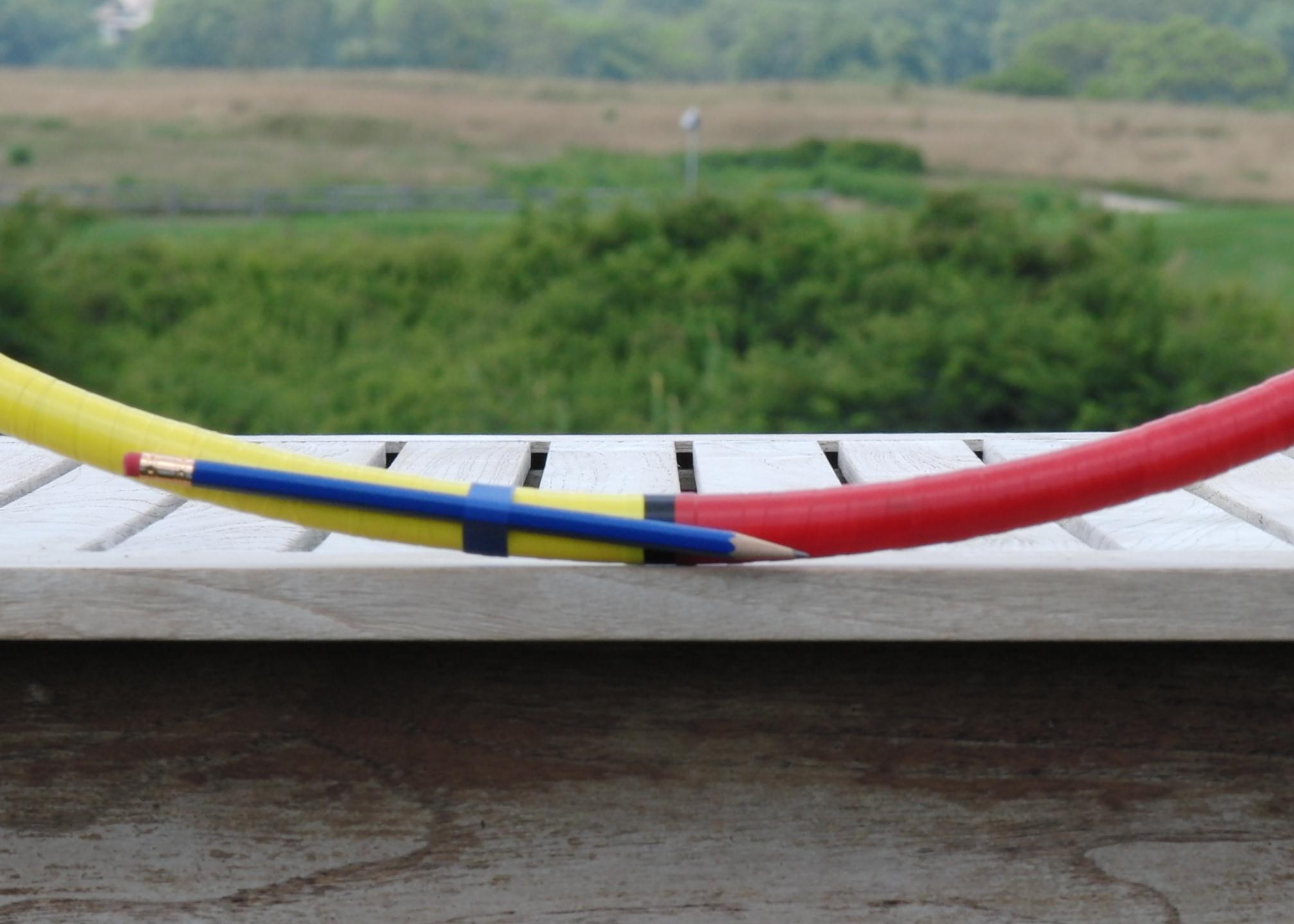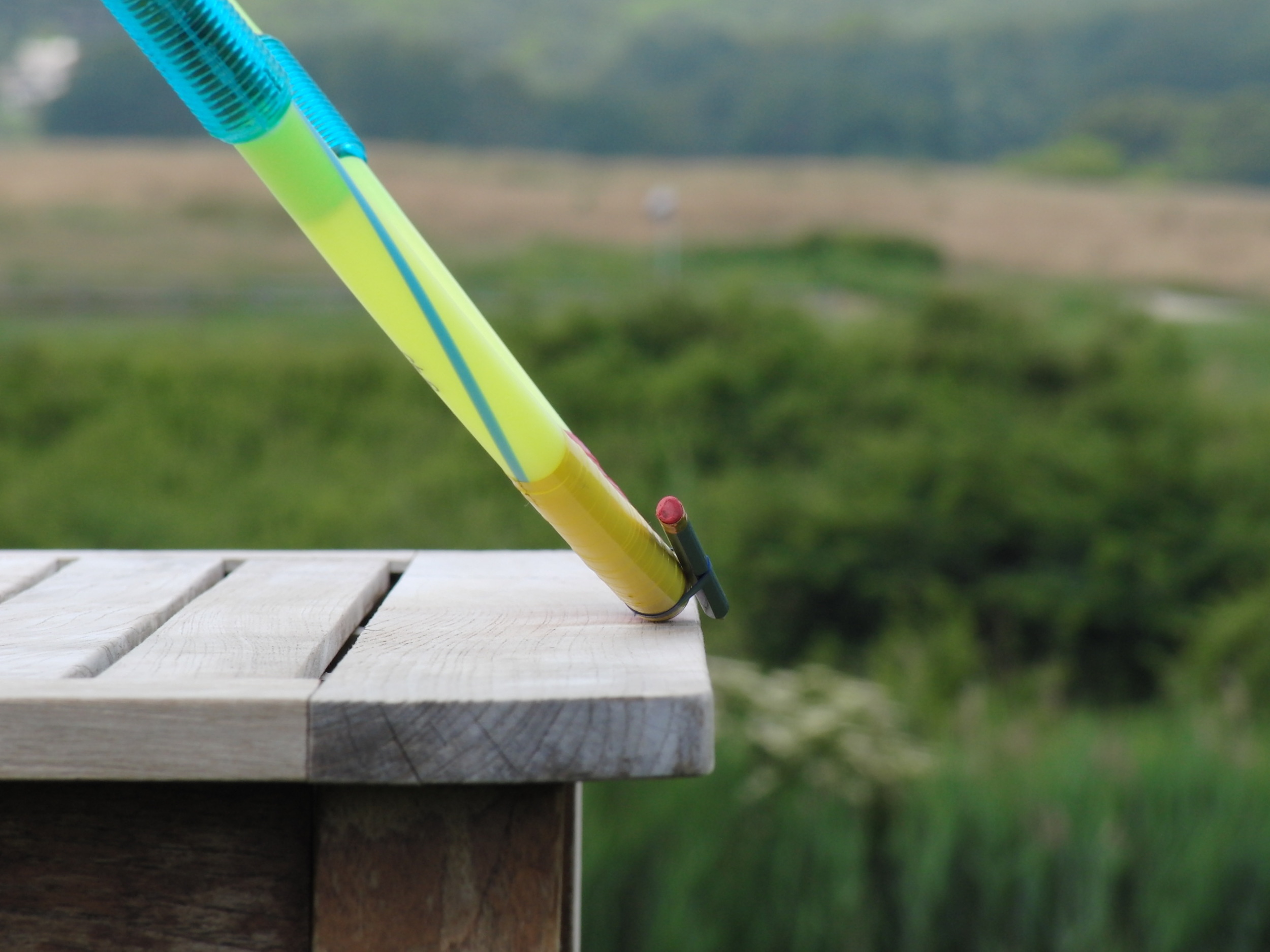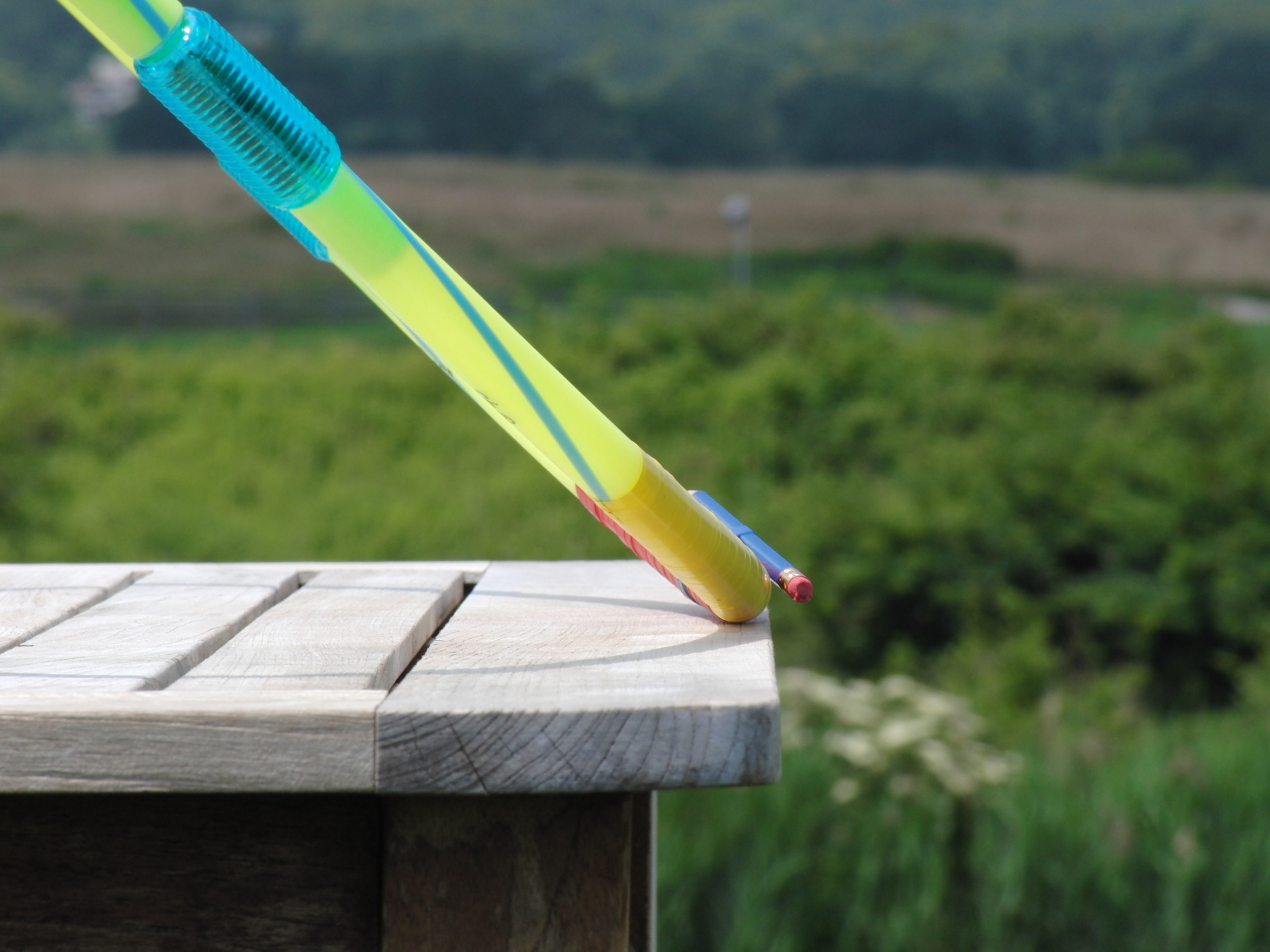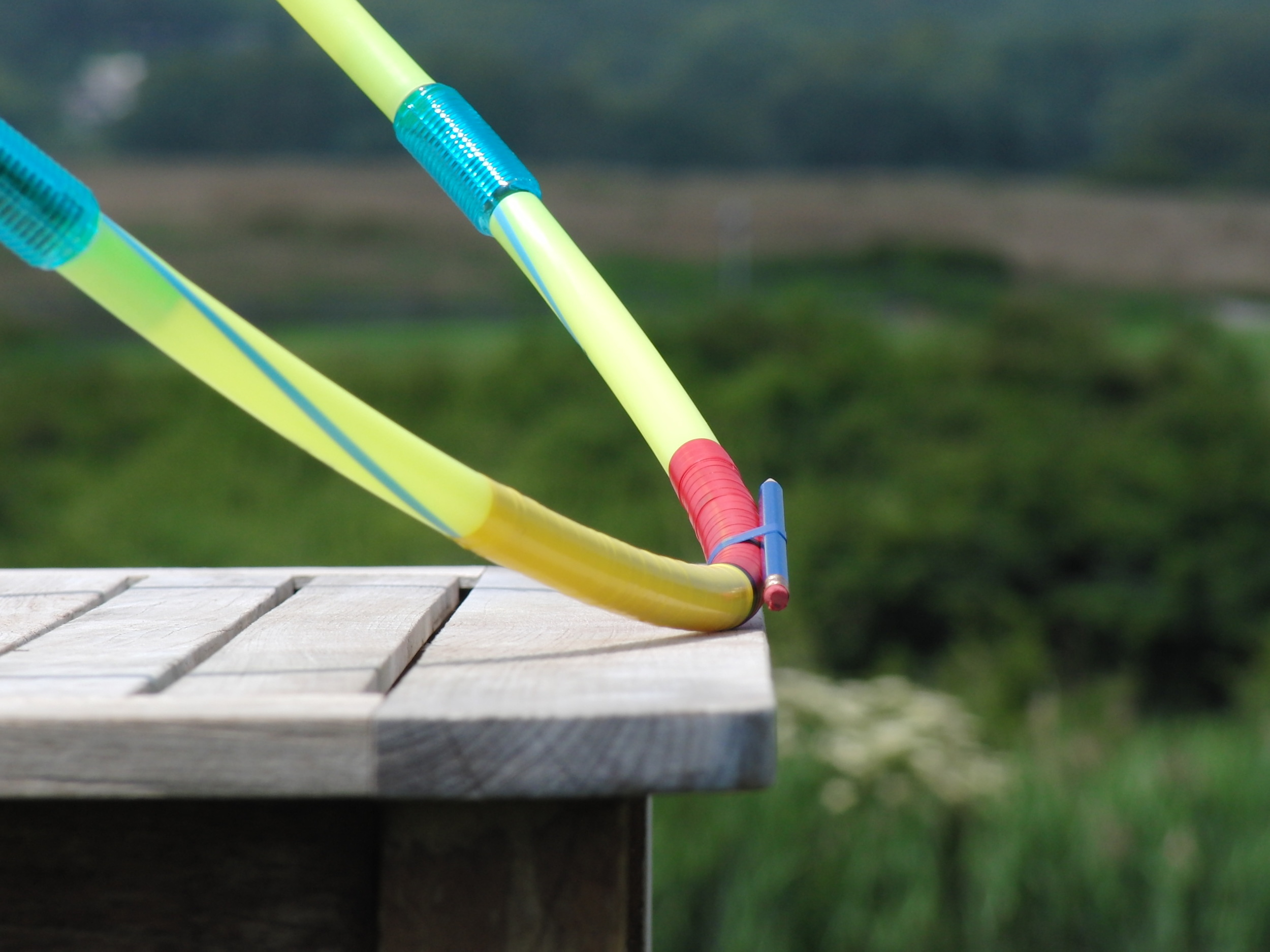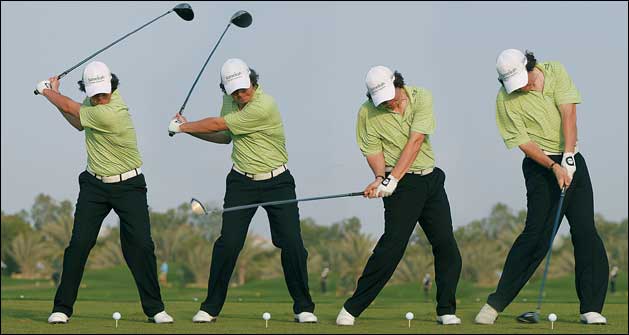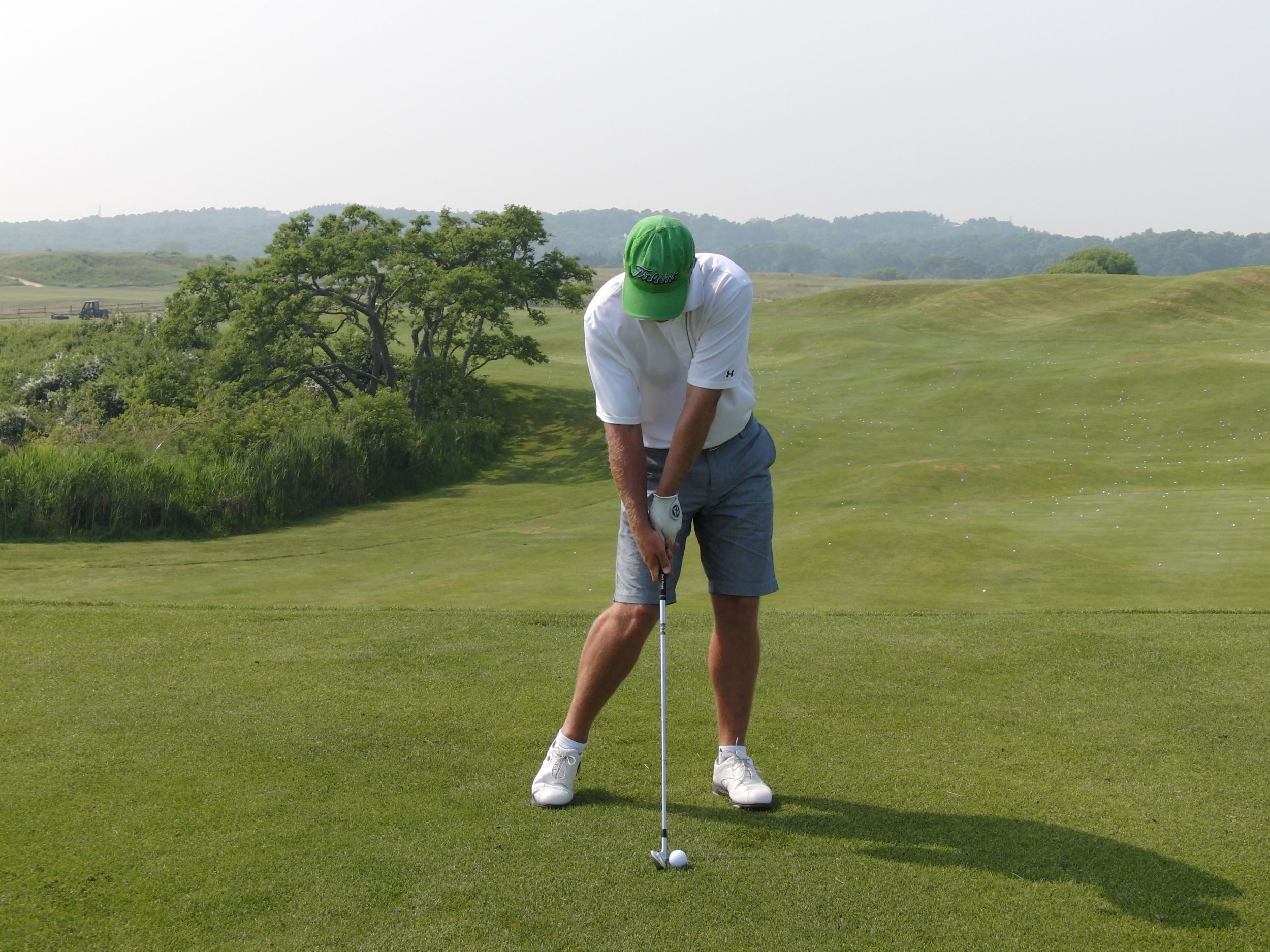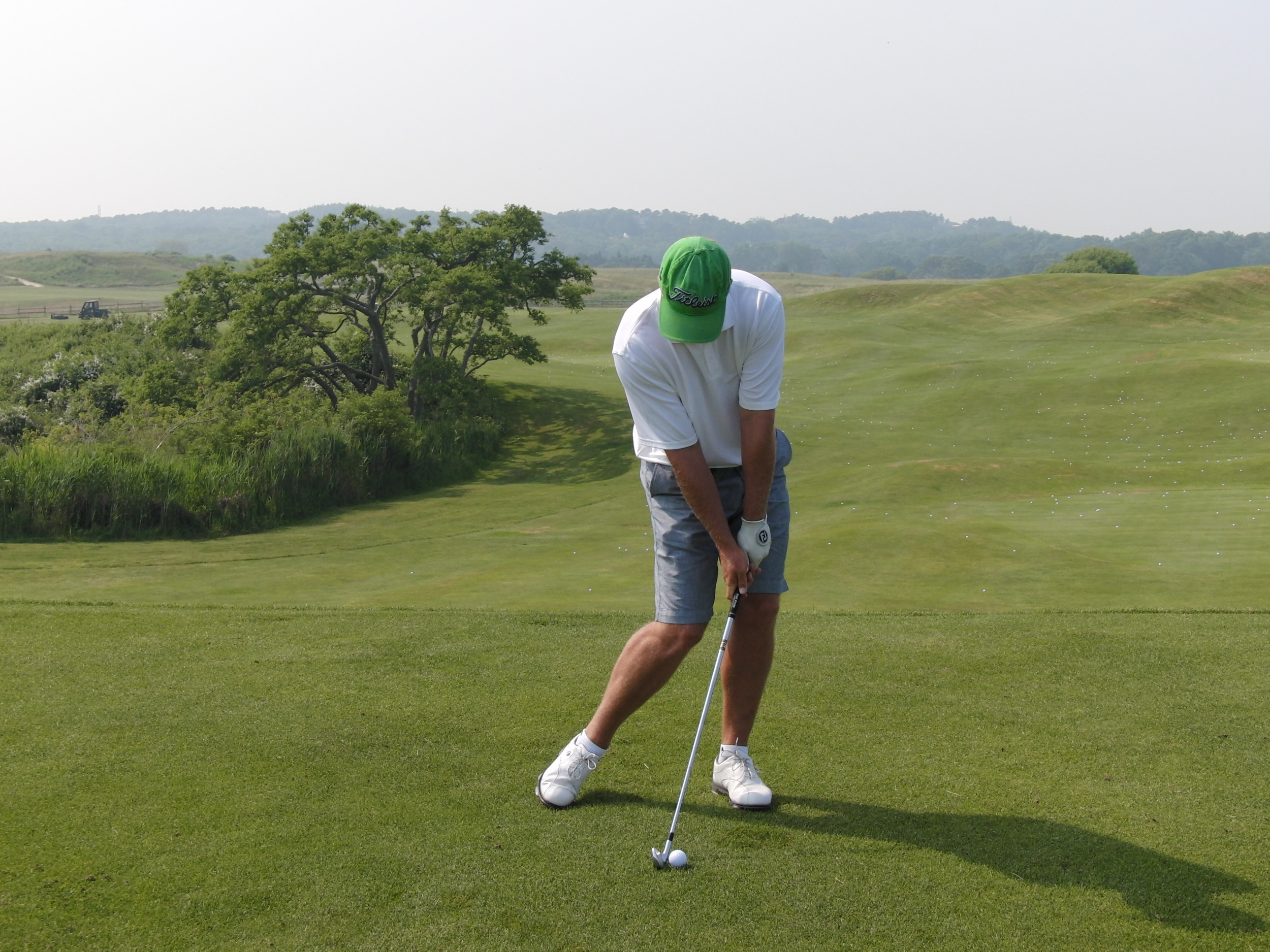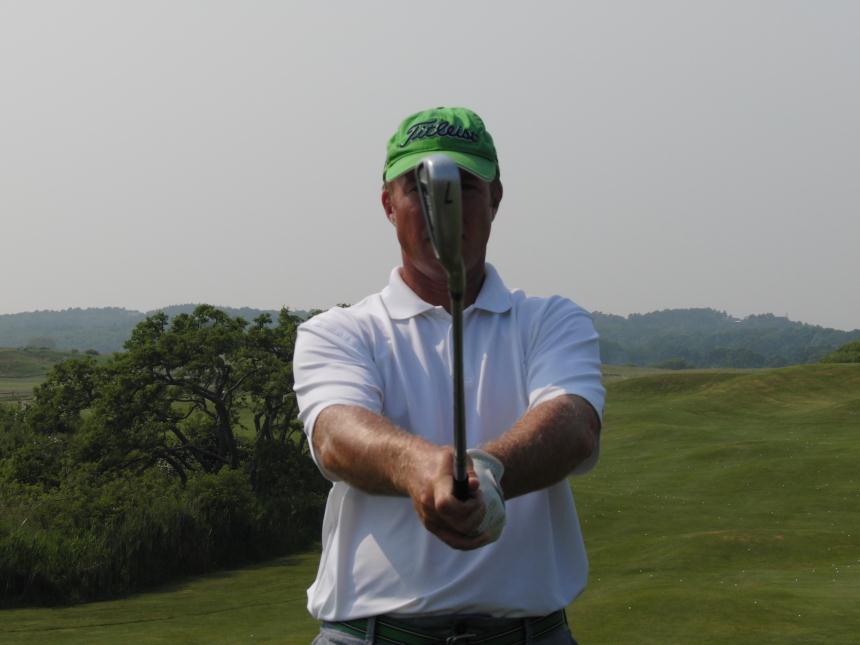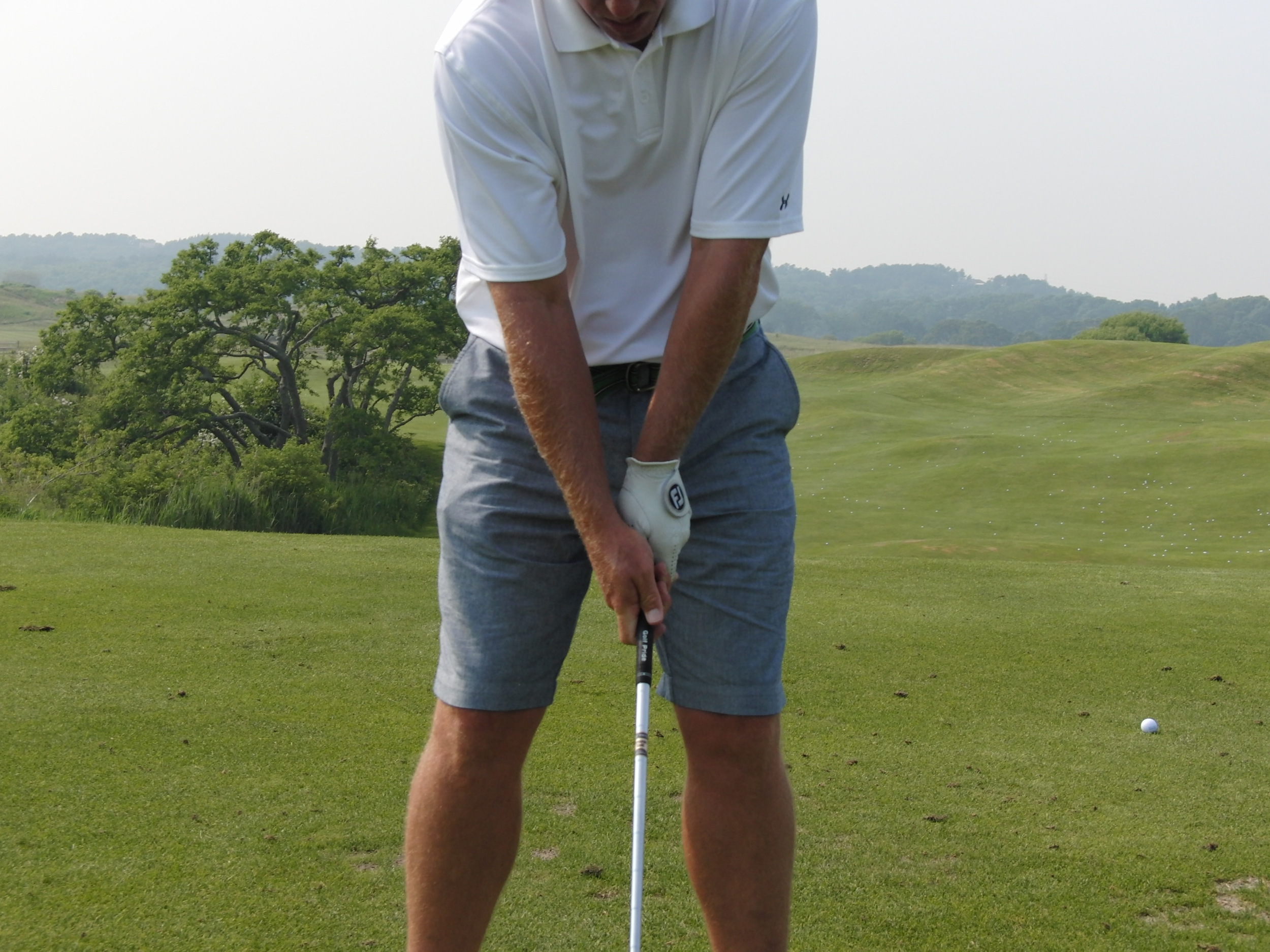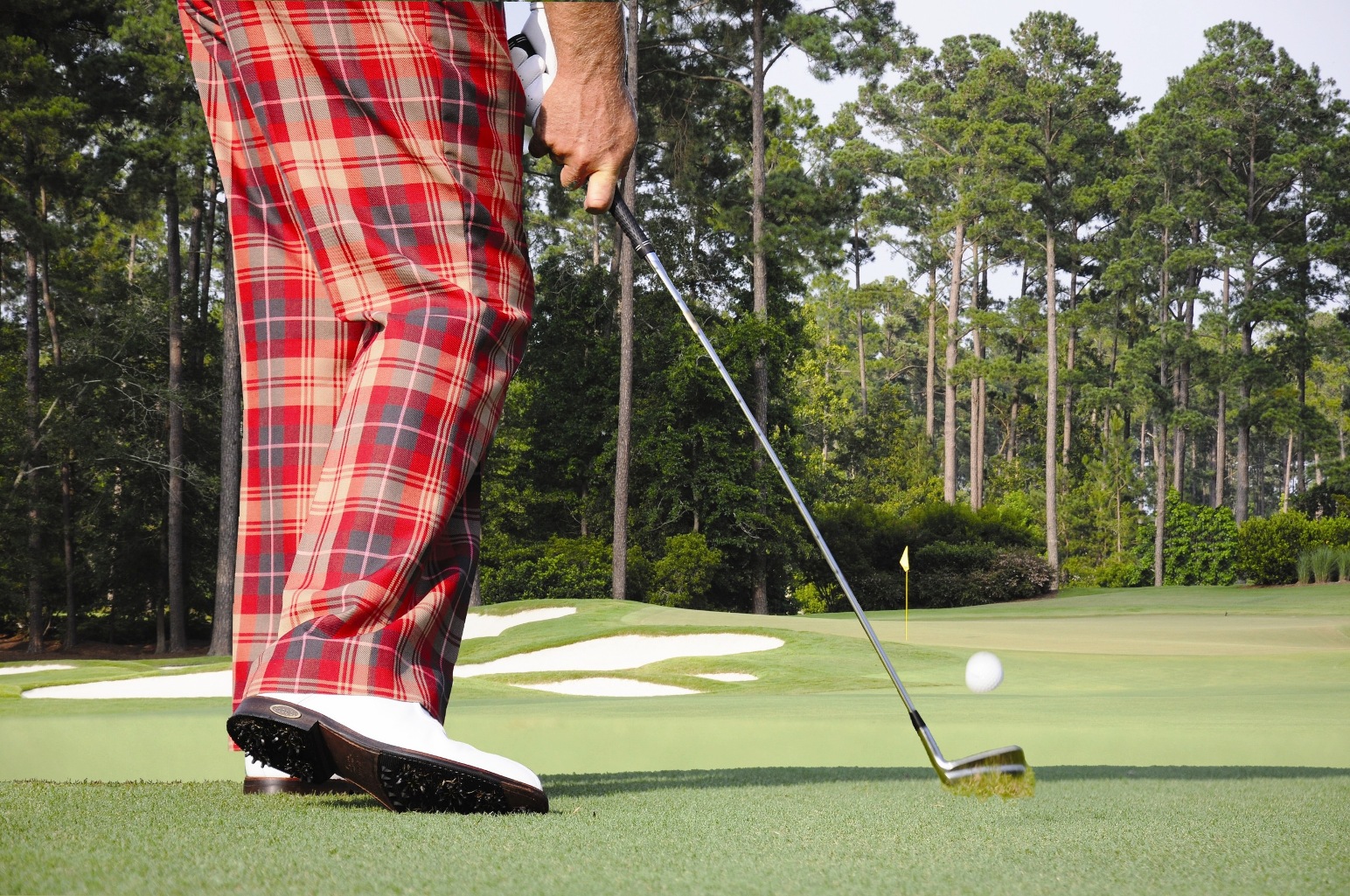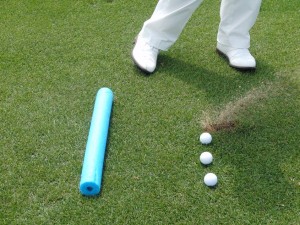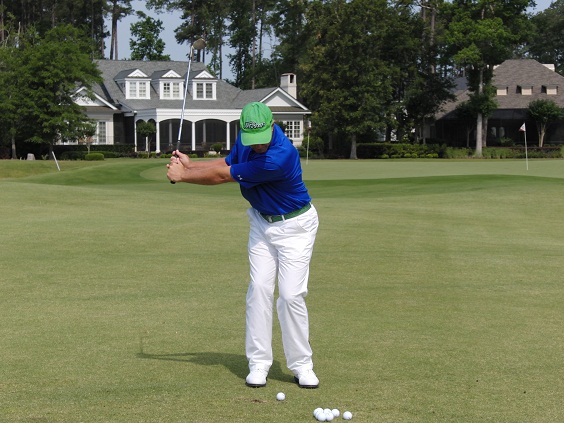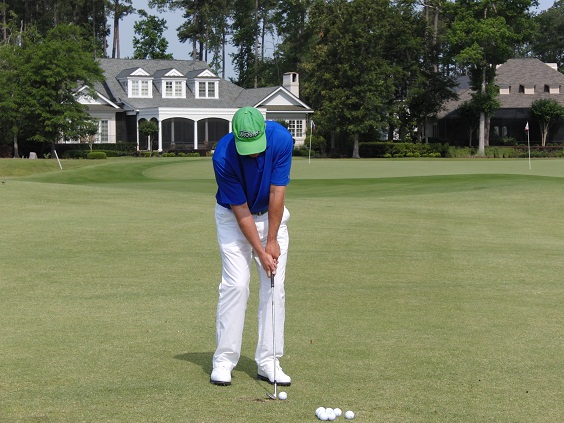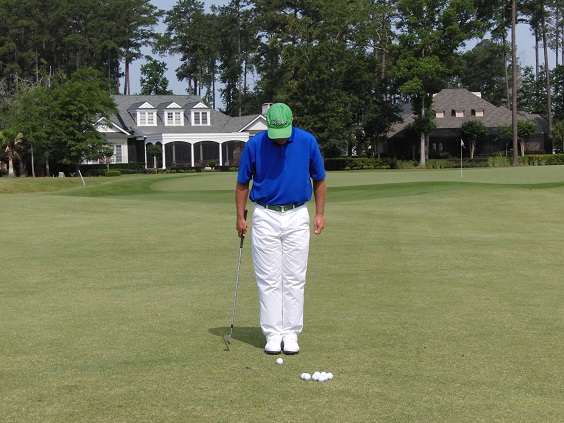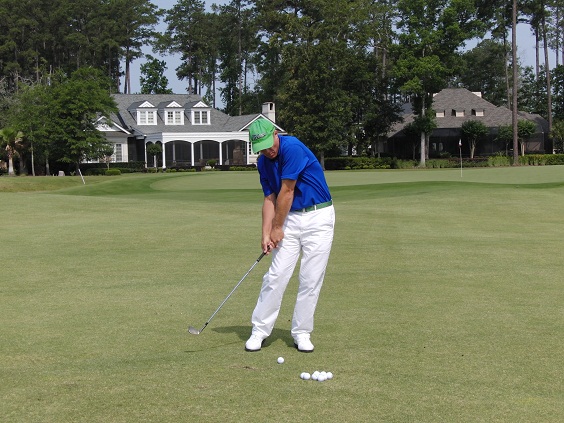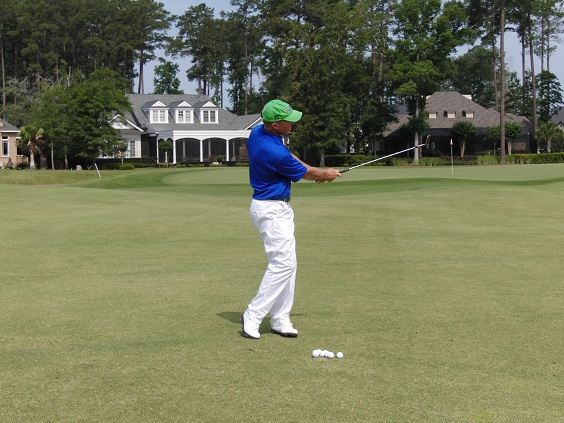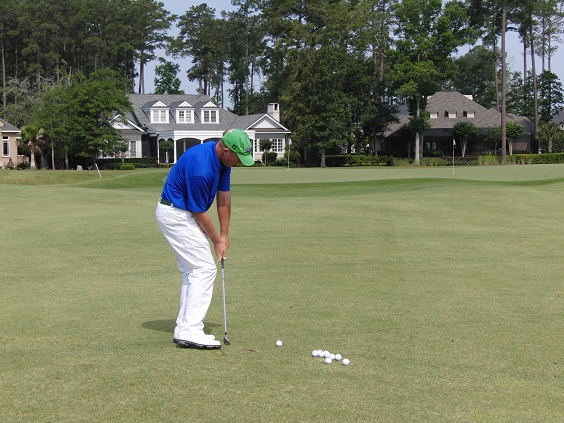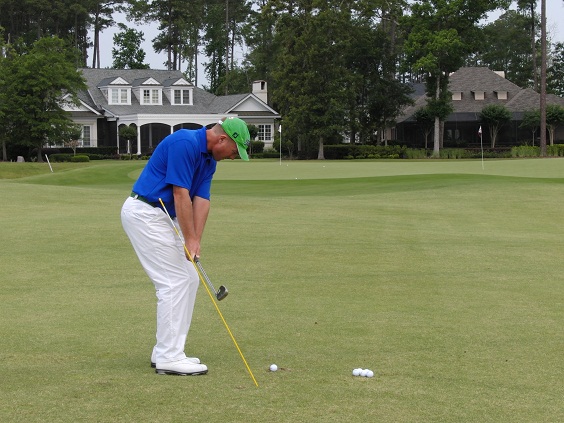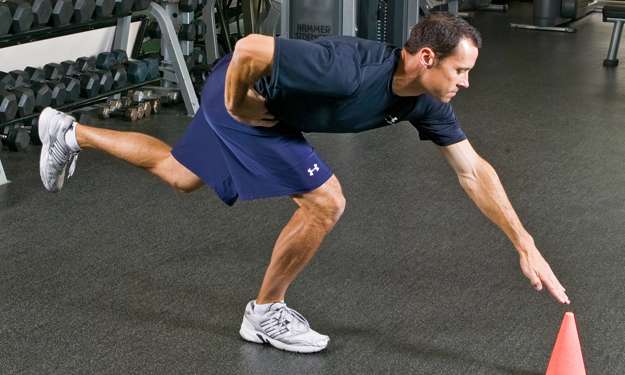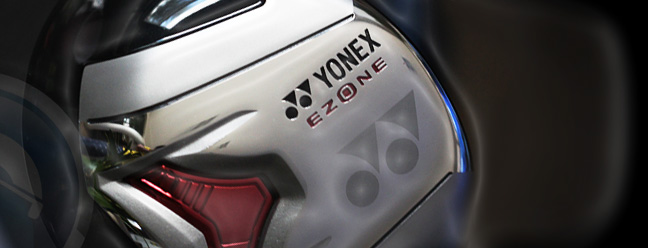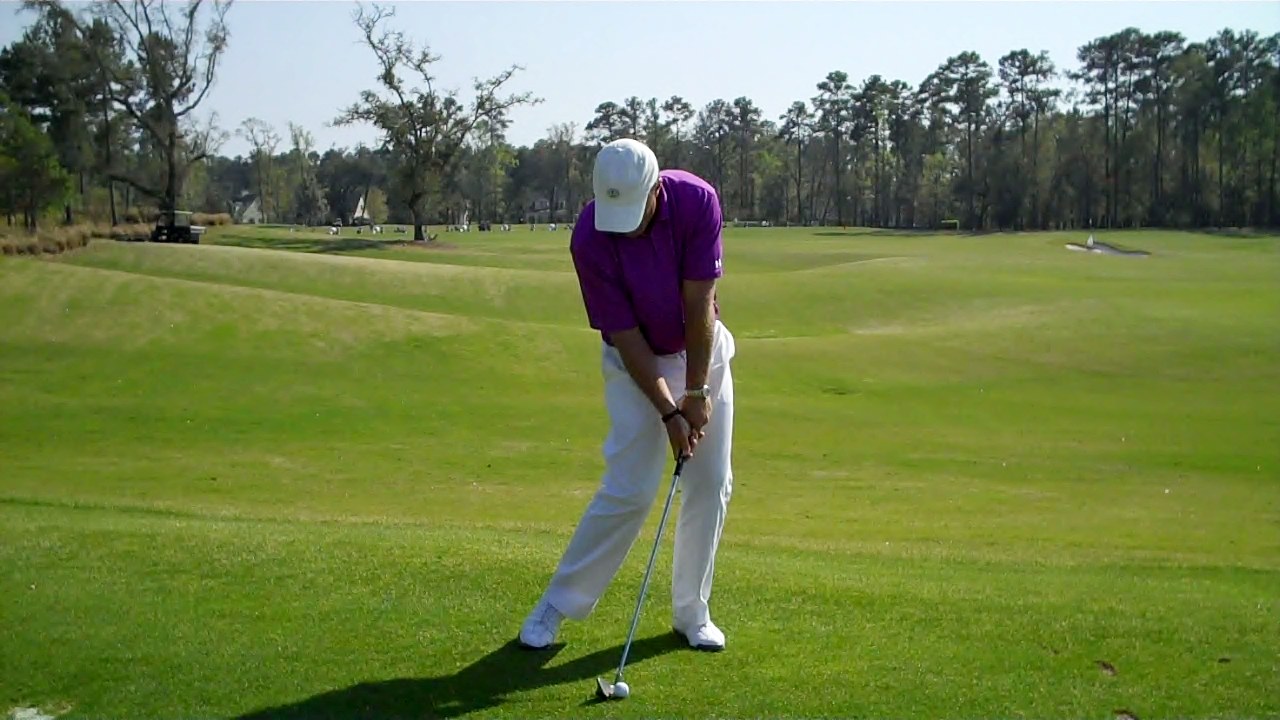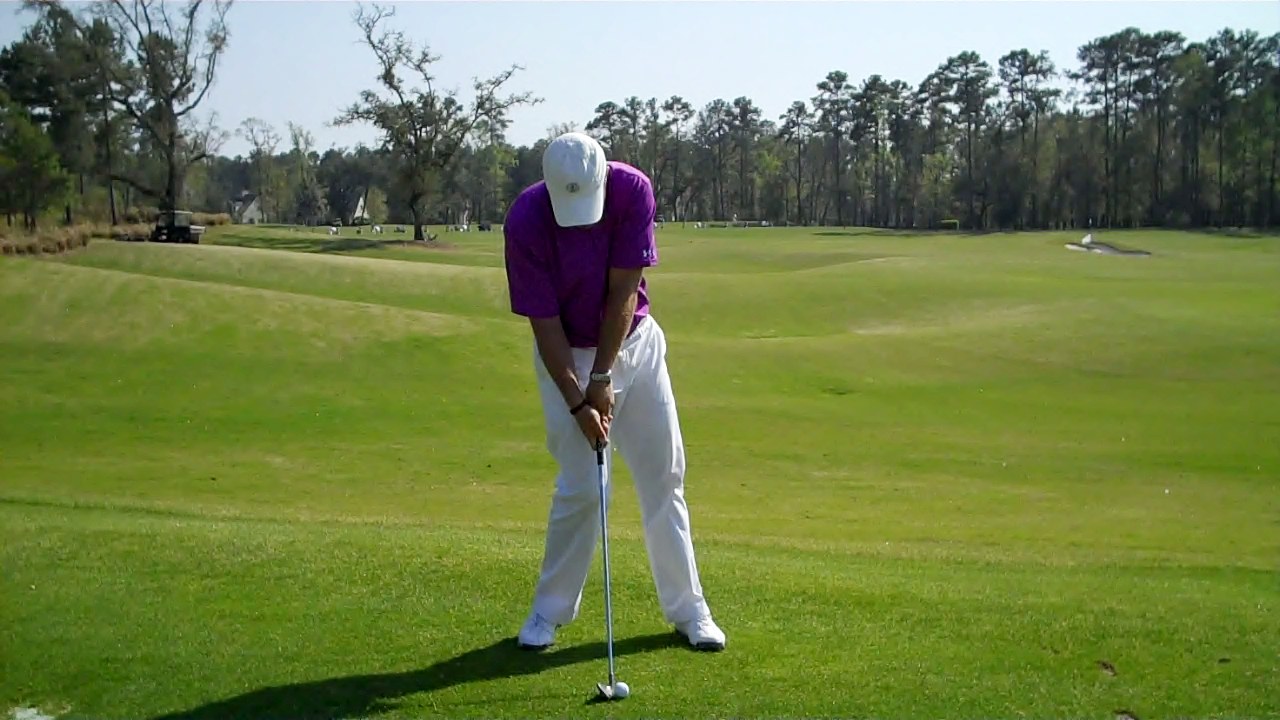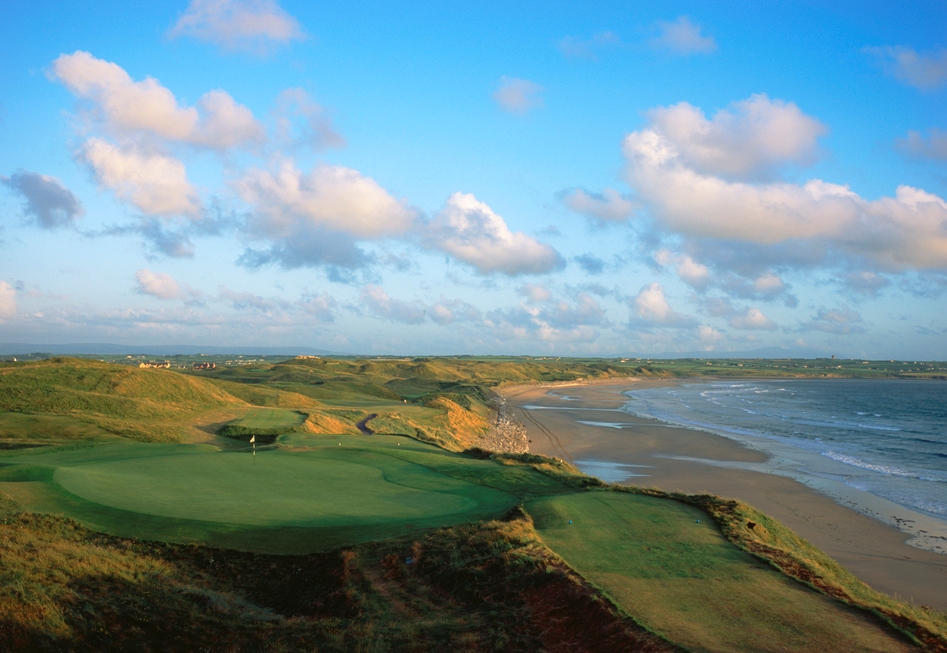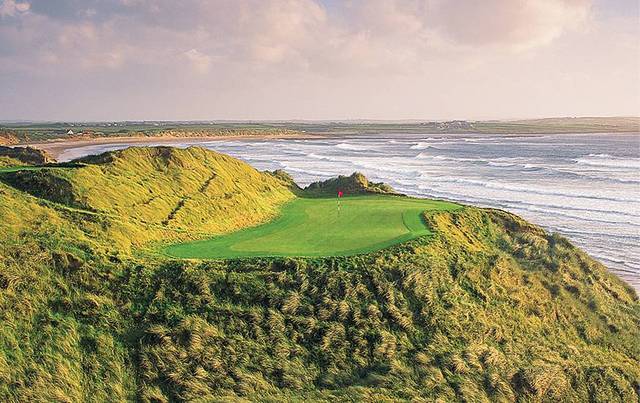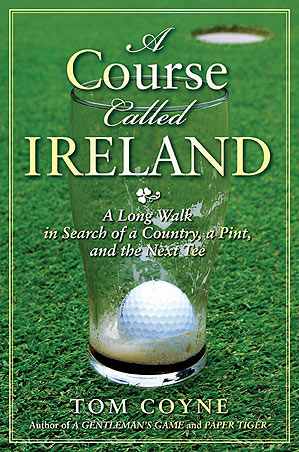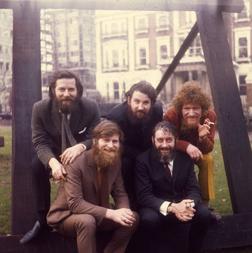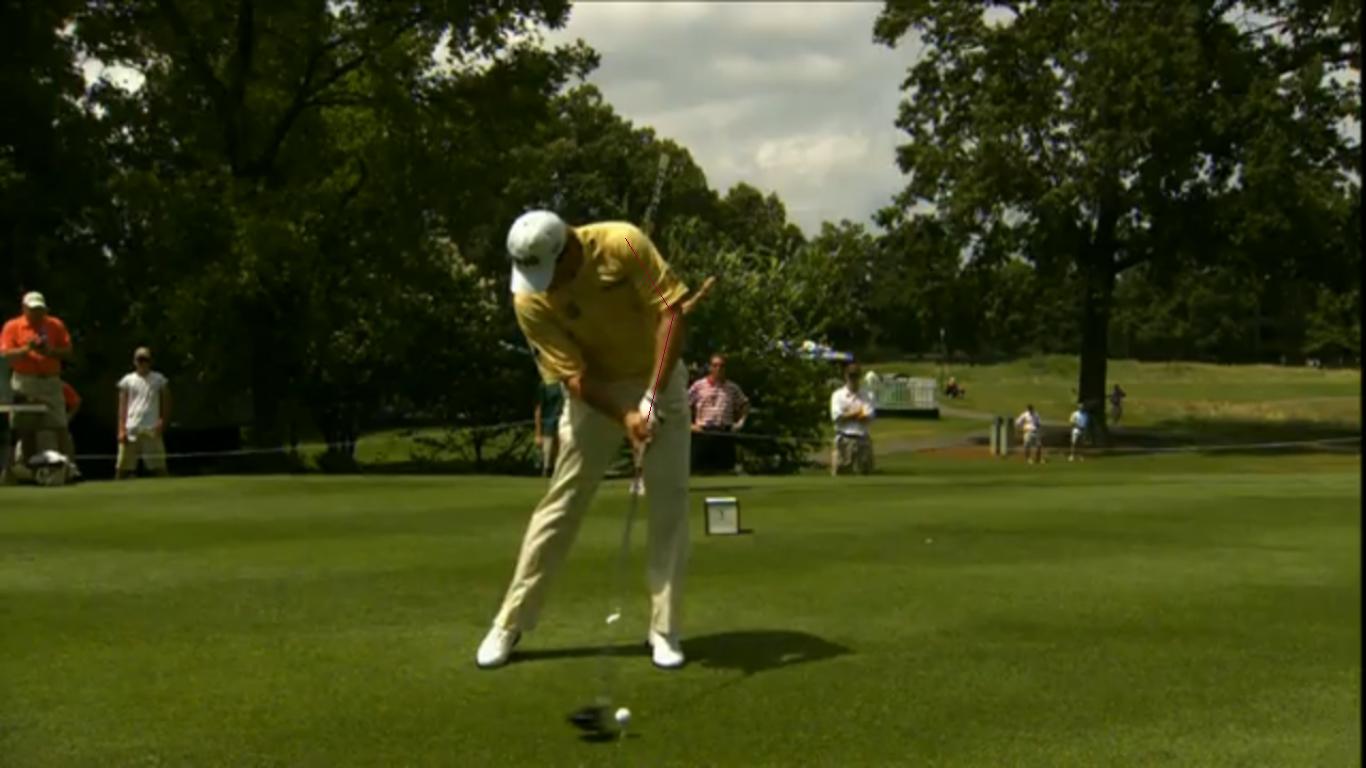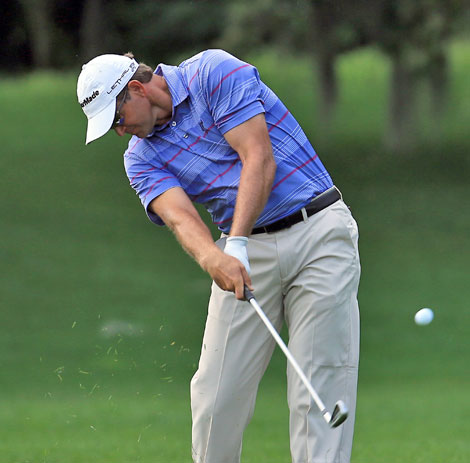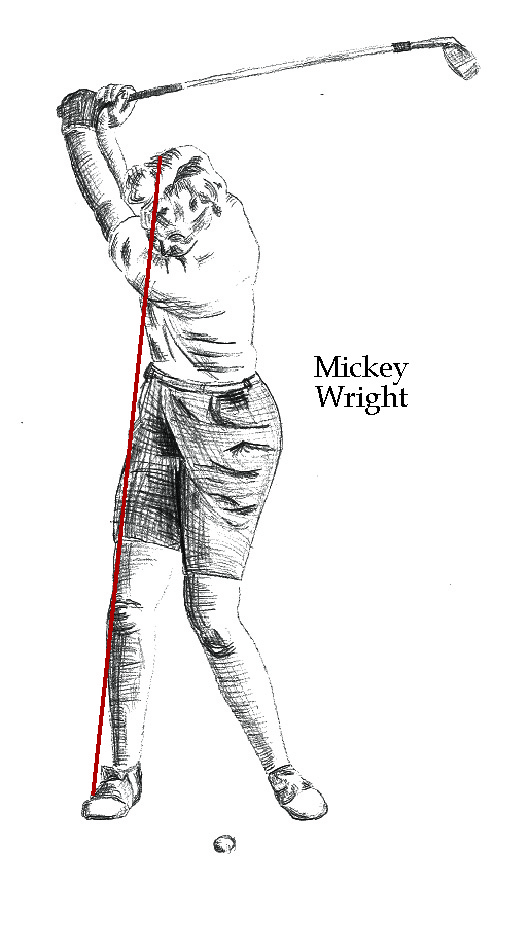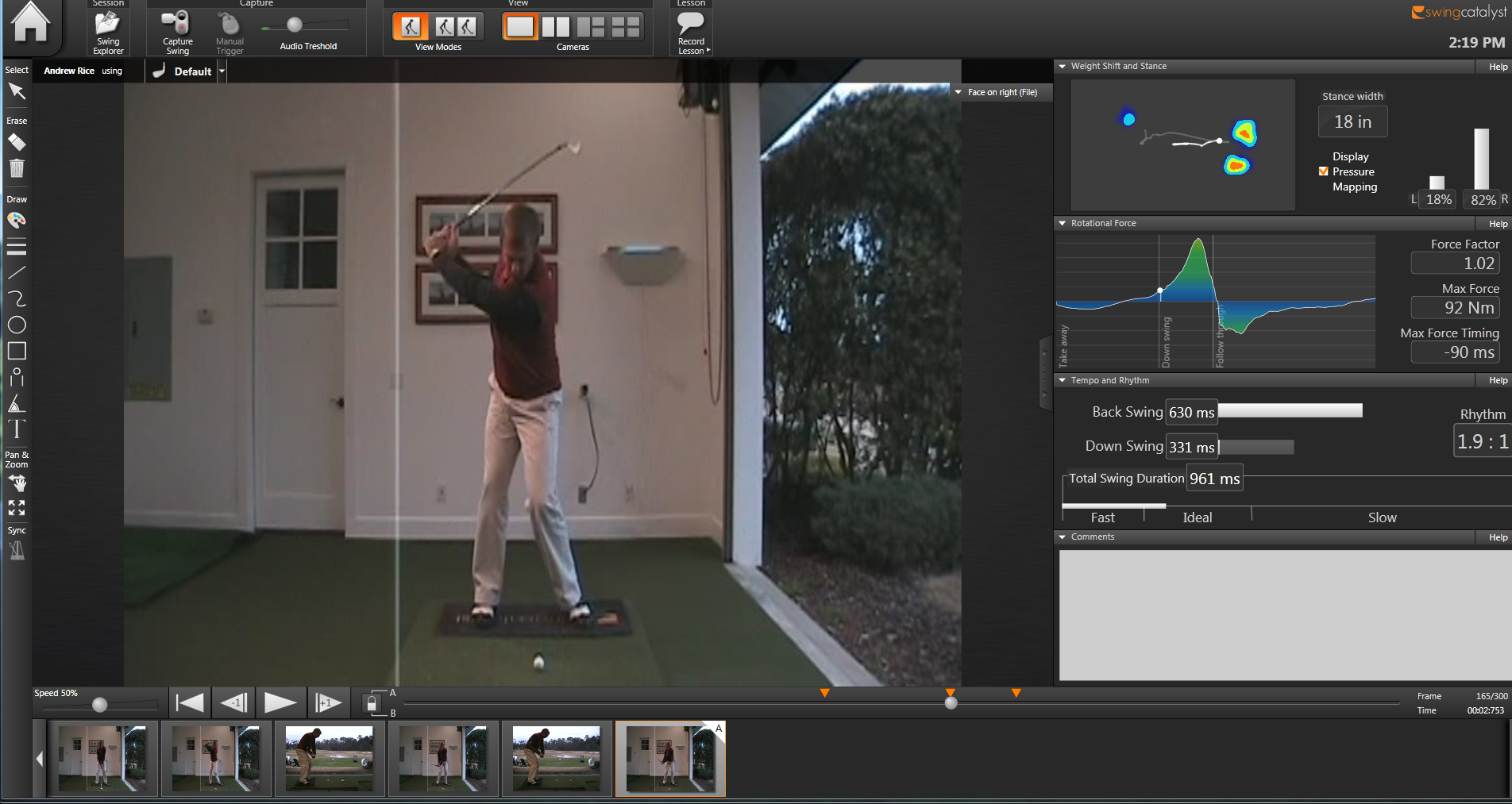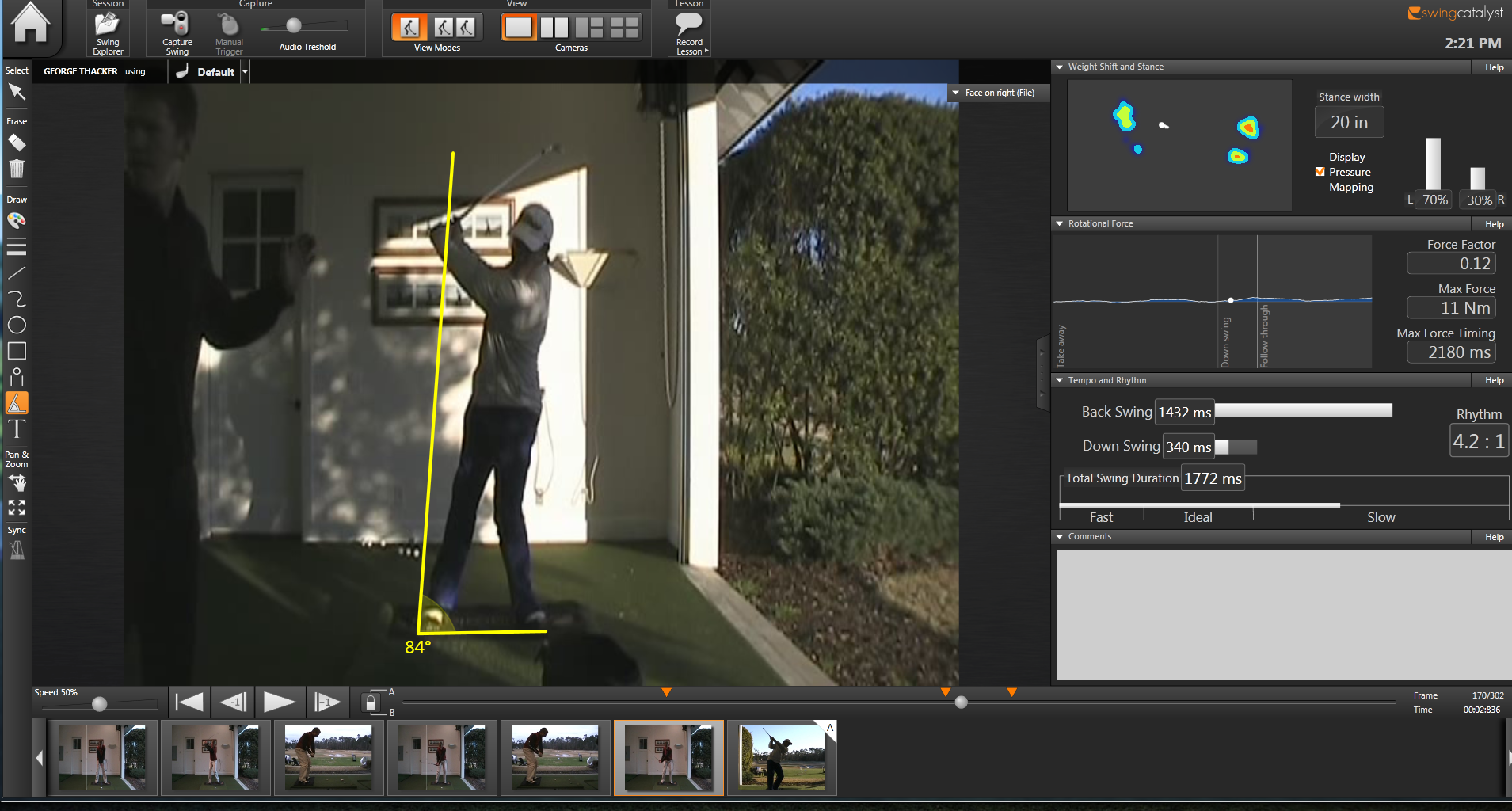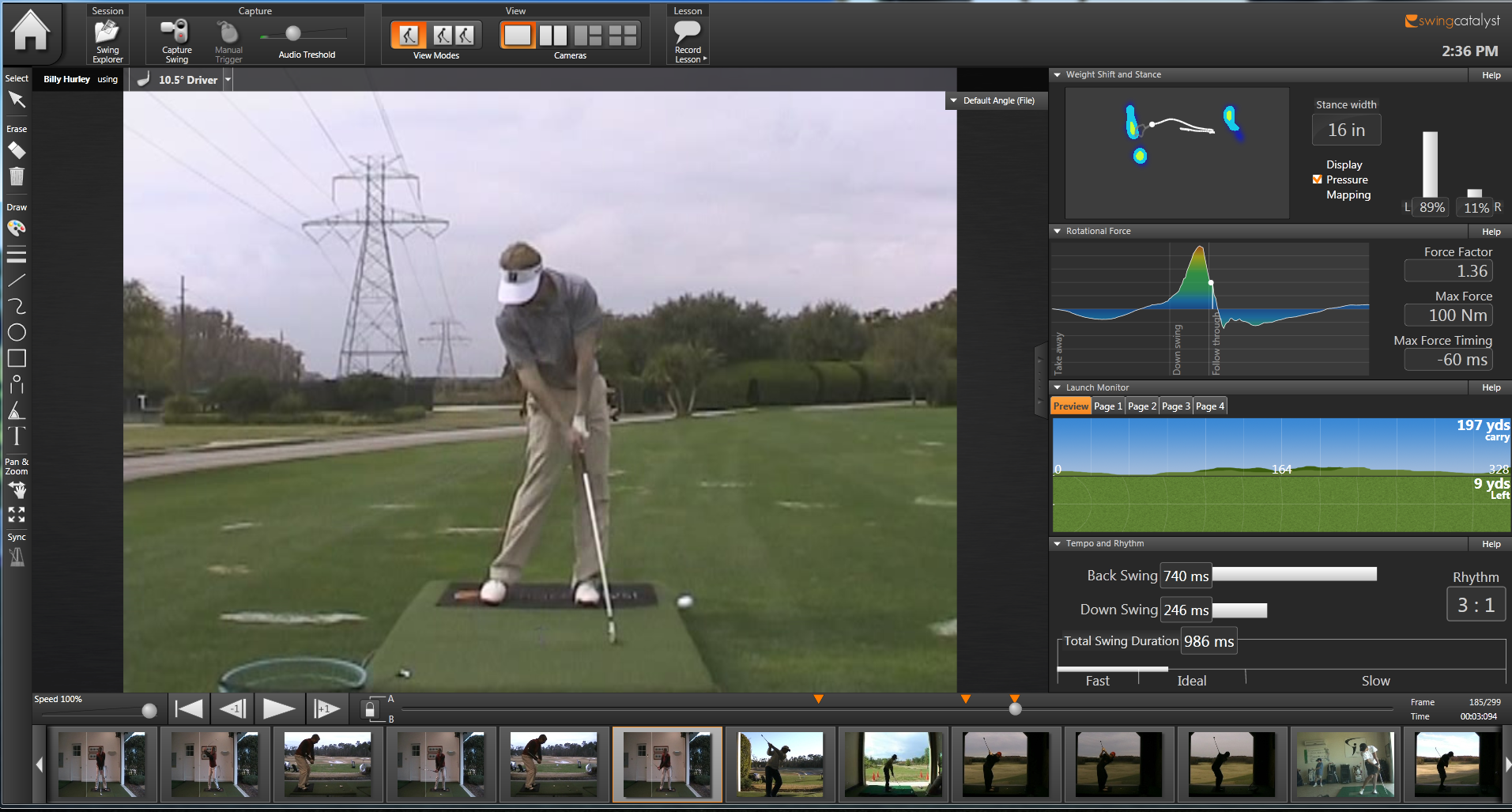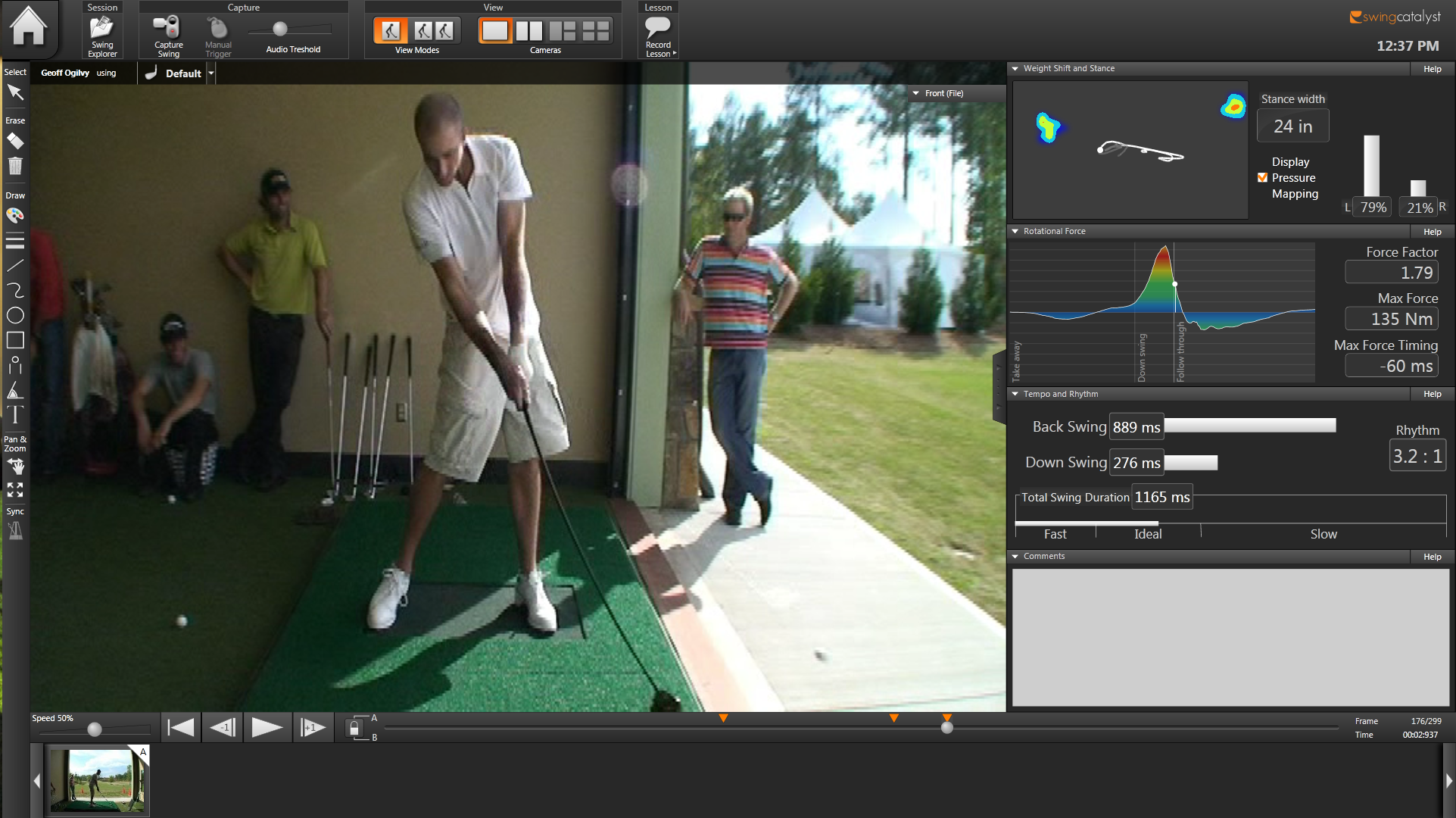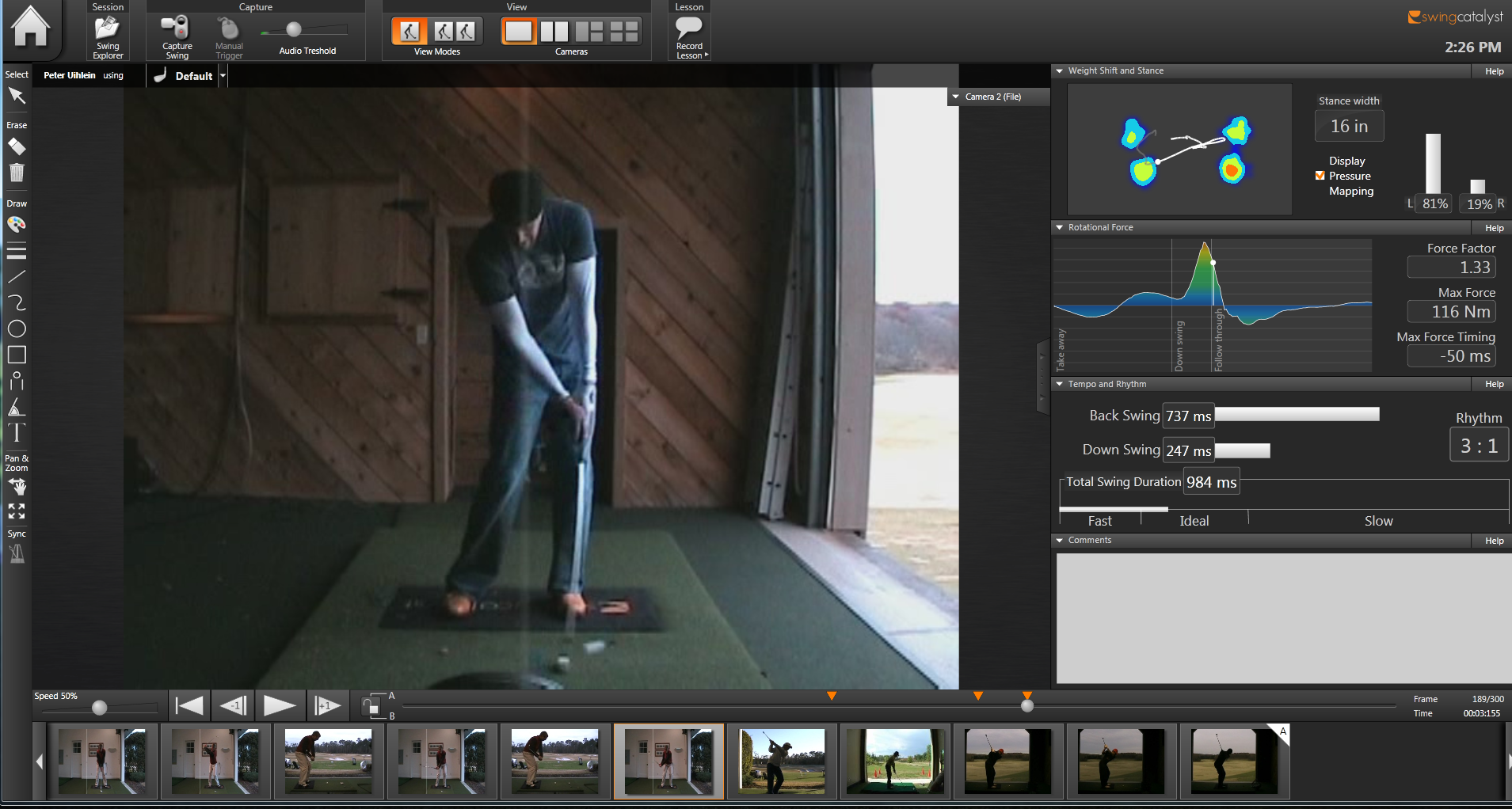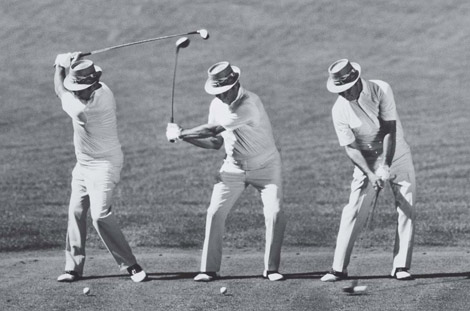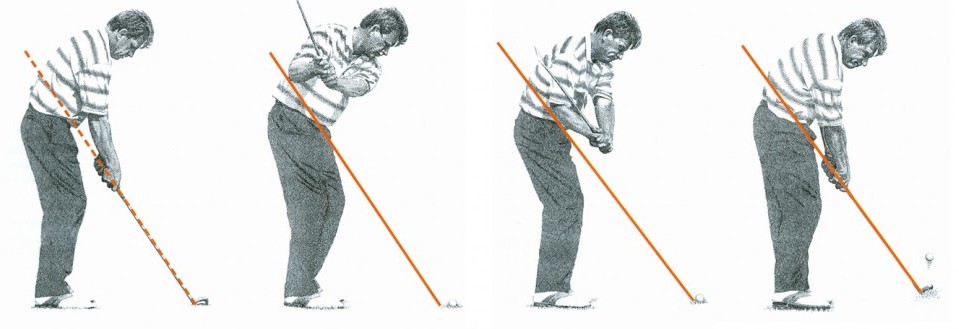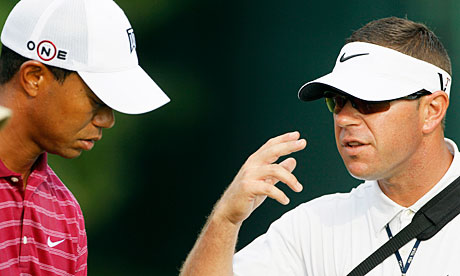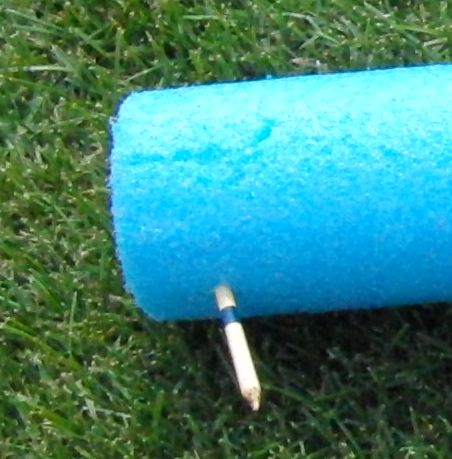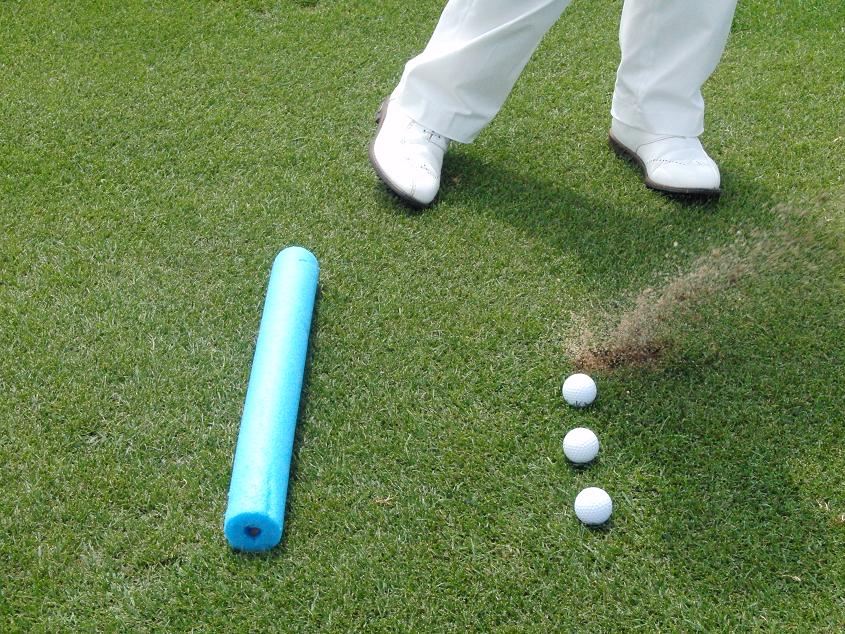Understanding Swing Plane and Club Path
/There are important differences that occur at impact when a golfer hits either down or up on the ball (attack angle). I have always espoused that golfers hit down on all clubs, the driver included, but my research with Trackman has convinced me otherwise. The ball should be struck with a subtle downward blow with all shots off the ground (irons, hybrids and fairways), but the driver should ideally be hit with an upward strike for optimal trajectory and spin patterns. I will attempt to explain the differences in the direction the clubhead travels (relative to the target line) as it moves both down, and up, into the ball.
Firstly, it is important to understand the difference between swing plane (also referred to as swing direction) and club path, because too many golfers believe they are one and the same. Let's view swing plane as the hula hoop in the pictures below - it is the angle upon which the arc of the swing travels. Club path is the direction the clubhead is travelling in, relative to the target line, at the moment of impact.
Hitting down on the Ball:
PGA Tour golfers hit down on a 7 iron with an average attack angle of slightly more than 4 degrees. You should be able to tell to what degree you hit down on the ball simply by analyzing your divots - too much dirt being moved and you're more than likely 8 degrees down, no divots would mean a flat or neutral attack angle.
When a golfer hits down on the ball with a neutral swing plane (straight at the target) notice how the pencil (used to illustrate club path) points right of the target. The table's edge indicates the target line.
This means that with a straight plane/swing direction, when the clubhead travels down, it is also travelling from in to out relative to the target line.
In order to neutralize the club path, the swing plane must actually be rotated to the left. Thus, with a descending attack angle, in order to create a straight club path, the swing plane must be rotated to the left of the target line (for right handers).
Hitting up on the Ball:
Better drivers of the ball tend to hit up on the ball - anywhere from 1-5 degrees up. This reduces the amount of spin on the ball and increases the launch angle - thus increasing both carry and roll distance.
When a golfer hits up on the ball with a neutral swing plane (straight at the target) notice how the pencil (club path) points left of the target.
In this example, with a straight plane/swing direction, when the clubhead travels upward, it is also travelling from out to in relative to the target line.
This out to in path can be neutralized by rotating the swing plane/direction to the right (for right handers). Notice how the pencil (club path) is now straight.
So if somebody ever asks you if the swing with the driver and the irons is the same, just smile and say, "No, not really!"
Any thoughts? Questions....


